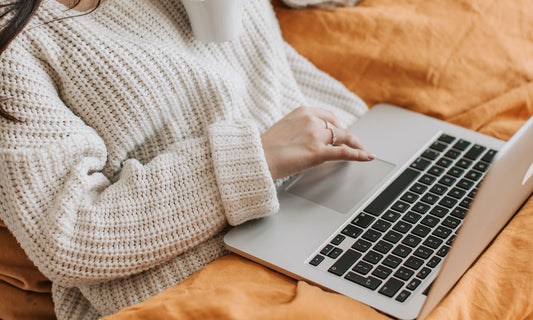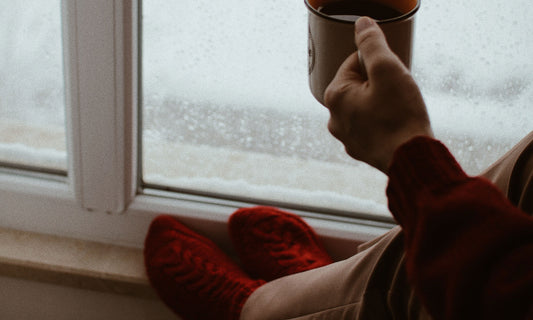Dr Alanna Hare is a consultant in respiratory and sleep medicine at Royal Brompton & Harewood Hospital, and has written this exclusive article for us to help our customers and readers in creating their ideal bedroom for sleeping.
TO SLEEP, PERCHANCE TO DREAM: CREATING THE IDEAL BEDROOM FOR SLEEP
Many of us are aware of what our ideal bedroom might look like: hours spent on Instagram and Pinterest searching for that perfect light fitting and the pale so-hot-it’s-now-out-of-stock grey waffle throw mean that we are all armchair interior designers now. But how much time have you spent considering ensuring your bedroom doesn’t just represent your design ideals but also represents an ideal sleep environment?
The truth is, most of us are more focused on the wall colour being just the right shade of grey than on ensuring the room is conducive to restful and restorative sleep. But getting the bed and bedroom right can help to ensure a good night’s sleep (and a good night’s sleep will also help you make better decisions when it comes to that wall colour!) so as a sleep specialist, here are my top 3 tips to creating the ideal environment for sleep:
1. LIGHTS OUT!
Darkness is as essential to good quality sleep as light is for wakefulness and alertness in the daytime. Levels of melatonin, the body’s natural sleep hormone, rise as light levels fall during the early evening, signalling to the body and brain that it is time to sleep. Excess light levels during the evening and at night time disturb this natural rhythm, delaying the onset of sleep, and disturbing sleep during the night.
Turn off all electronic devices at least 60 minutes before bedtime to ensure a “digital sundown” and consider fitting dimmer switches in the bedroom, or switch off overhead lights and instead turn on bedside lamps with low wattage or incandescent light bulbs to deliver warm, red wavelength light which is more conductive to sleep. Eye masks can also help ensure light exposure overnight is minimised and thereby may improve sleep. For individuals who find that even low levels of light can disturb their sleep, those who work shifts and need to sleep during the daytime, or for those who are travelling across time zones, eye masks can be invaluable in improving sleep quality and duration.
2. COOL DOWN AND KEEP COMFORTABLE
The temperature of your bedroom environment and your bed is very important for sleep quality, because sleep regulation is closely linked to body temperature. Sleep onset is normally initiated by a decrease in core body temperature, and a driving force behind this decrease seems to be an increase in peripheral skin temperature, facilitating heat loss from your core to the environment through the skin surface. Skin temperature can therefore modulate sleep depth; core body temperature continues to decrease across the night, and your major sleep period occurs during the lowest core body temperature. By contrast, skin temperature peaks during sleep: in fact, foot skin warming (by wearing socks) has been shown to reduce the time taken to fall asleep.
The bedroom itself needs to be cool: our optimal temperature for sleep is a somewhat chilly 16 – 18°C. Opening the window for a couple of hours before bed, or using a fan in warmer weather, can help to keep the room cool. Adjusting your sleepwear with seasonal changes can improve sleep quality and reduced the time taken to fall asleep: cotton, linen and bamboo-fibre sleepwear and bedding can help to better regulate skin and core body temperature. A quality mattress can also help to regulate body temperature overnight and will also ensure you remain comfortable in bed, avoiding aches and pains in the early hours and reducing micro-arousals from sleep due to the need to turn over frequently. This is particularly important for individuals with musculoskeletal problems such as arthritis.
3. SHHHHH!
Sounds that you would not notice in the daytime can become troublesome when you are trying to sleep and there is evidence that, even if an external noise is not loud enough to wake you fully, it can still disrupt your sleep, causing brief arousals sufficient to disrupt sleep cycles. Generally, noises are most likely to wake people during stage 2 sleep, the light, non-REM stage we spend about half the night in.
However, whilst environmental noise can disrupt sleep, the right kind of noise can also help you sleep better. White noise, delivered through an app or a sleep device, can help to reduce the impact of external noise on sleep, blocking out the sudden sounds which could otherwise cause you to be woken or have your sleep disrupted. Sound machines producing sounds like rainfall or ocean sounds can also become a positive cue for sleep, telling your brain it is time to start winding down. Recent studies have explored the use of “pink noise”, perceived by the human ear as “even” or “flat” (compared to white noise, which is heard as “static”): one study showed that pink noise increased deep sleep and improved memory in older adults. The key is to choose a sound at a level that you find relaxing and minimise sudden increases in volume which might disturb your slumber.
Put these tips into practice and you should find over time that sleep comes more easily (and with it, the ability to finally make a decision on that wall colour...)
Dr Allie Hare
MA (Cantab) MB BS MEd MRCP
Consultant Physician & Specialist in Sleep Medicine
Try one of our adjustable beds at a retailer near you.
Find out how Hugel could help you with your bed needs.
Contact us, or speak to our experts advisors on 0333 222 1804




